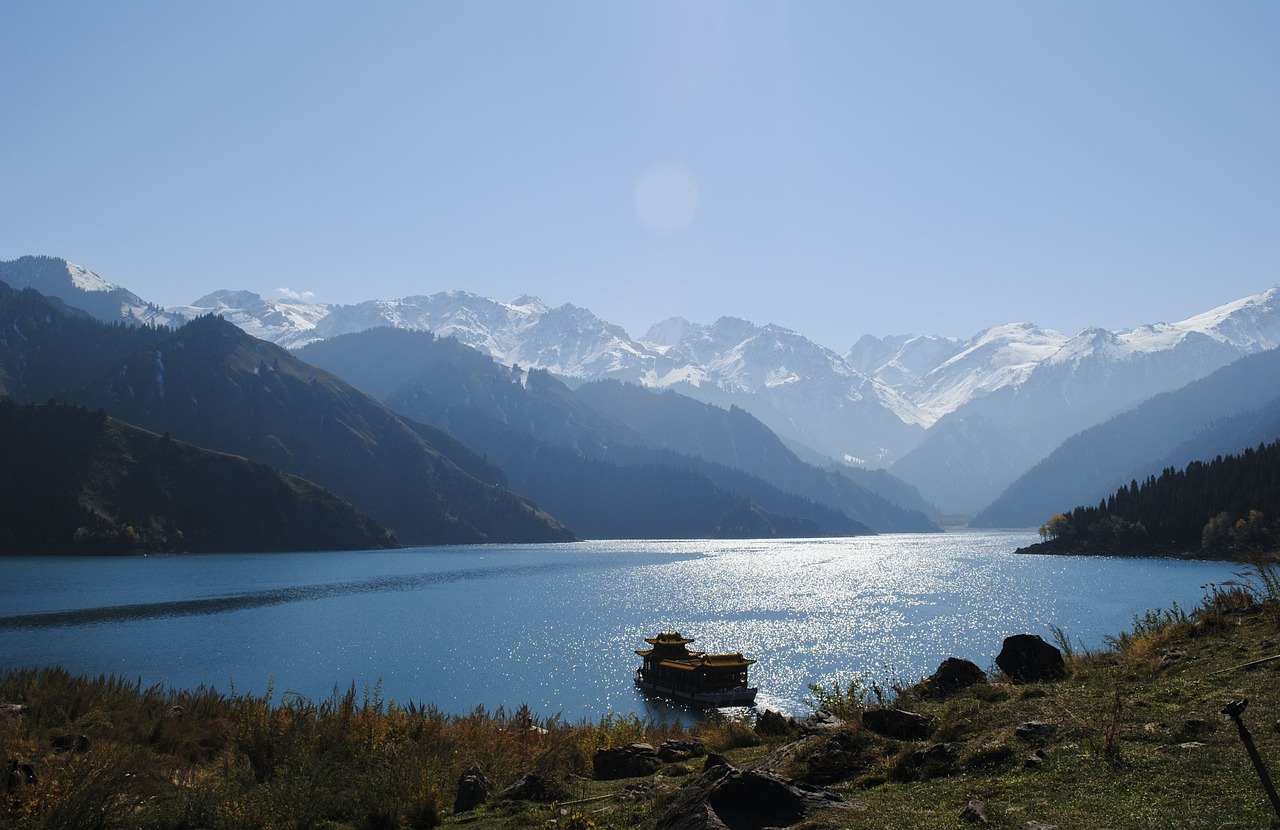
Nestled in the far west of China, Xinjiang is a land of remarkable contrasts and breathtaking beauty. Spanning over one-sixth of China’s territory, this vast and diverse region is a tapestry of stunning landscapes, rich cultural heritage, and intriguing history. From the majestic peaks of the Tianshan Mountains to the shimmering sands of the Taklamakan Desert, Xinjiang offers a unique blend of natural wonders and ancient traditions.
Here, the Silk Road once thrived, and its legacy lives on through the cultures and ethnic groups that call Xinjiang home. You’ll encounter the warm hospitality of the Uygur people, savour the aromatic spices of local cuisine, and marvel at the architectural splendors of ancient cities like Kashgar and Turpan. Whether you’re wandering through the bustling bazaars, exploring the mysterious ruins of ancient civilisations, or trekking through serene landscapes, Xinjiang promises an unforgettable journey that will captivate your senses and enrich your soul.
A Land of Contrasts
As the largest administrative region in China, Xinjiang sprawls across a diverse and dramatic landscape, featuring towering mountains, expansive deserts, lush grasslands, and shimmering lakes. At its heart lies the Pamir Plateau, often referred to as the “Roof of the World”, where five major mountain ranges converge. From the fiery red cliffs of Oytagh Red Valley to the tranquil waters of White Sand Lake, every corner of Xinjiang reveals geological wonders and natural beauty that will leave you enthralled.

Heavenly Lake of Tianshan
Located about a two-hour drive from the capital Urumqi, this stunning alpine lake nestled in the Tianshan Mountains is a prestigious 5A-rated scenic spot perched at an altitude of 1,910m. As you ascend, the awe-inspiring view of Bogda Peak unfolds, creating a picture-perfect setting. Visitors can enjoy hiking around the lake breathing in the fresh crisp air or take a boating cruise. Early morning visits are recommended and don’t forget to bring sunglasses and sunblock, as the UV rays of the sun are strong here.

The Historic Stone City
In the northeast of Tashikuergan County lies the Stone City, a remarkable relic and reminder of the Silk Road’s illustrious past. Once the royal capital of the ancient Puli Kingdom, the ruins of this fortress are renowned for their unique stone architecture, with well-preserved remnants including city walls and watchtowers constructed from locally sourced stone.
The ancient city played a crucial role in regional trade and cultural exchange, and its strategic location made it a vibrant hub for merchants and travellers. As you explore the site, you can almost imagine the bustling activity and cultural exchanges that once thrived here. Below the Stone City, the Golden Grassland transforms with the seasons, shifting from lush green in spring and summer to a golden expanse in autumn and winter.

A Step Back in Time
Kashgar Old Town is the vibrant cultural heart of Xinjiang, a living testament to the city’s storied Silk Road heritage. Divided into East and West districts, this historic area presents a captivating fusion of traditional architecture, bustling bazaars, and intriguing modern touches. In the East District, narrow alleys offer an intimate look into the daily lives of locals, while the West District features trendy cafes and art galleries that blend contemporary flair with ancient charm.
At the center of the Old Town stands the Id Kah Mosque, an inspiring example of Islamic architecture and one of China’s largest mosques. Its presence and spiritual significance make it a central pillar of the community.
The Kashgar Livestock Bazaar is another highlight, a lively hub where age-old trading practices continue amidst the vibrant energy of livestock deals and colourful stalls. As you wander through the Old Town, you’ll feel as though you’ve stepped back in time, where the echoes of the Silk Road’s historic trade routes still resonate through every corner.


A Taste of Sweetness
Turpan, a lesser-known gem in Xinjiang, is an oasis city known for its scorching summer temperatures and its role as a gateway to the Silk Road. The city’s most iconic feature is the Jiaohe Ruins, the remnants of an ancient city that thrived over 2,000 years ago, offering a glimpse into the area’s historical significance. Turpan is also famous for its Karez irrigation system, an ancient engineering marvel that channels underground water from the mountains to the arid plains, sustaining agriculture in the region.
The nearby Flaming Mountains, with their striking red-hued ridges, create a dramatic contrast against the blue sky, providing a unique natural spectacle. Local markets brim with vibrant fruits and spices, and in villages like Tuyugou Mazha, you can immerse yourself in the vibrant culture and savour the sweetness of freshly picked grapes, making a visit during the harvest season an absolute must.

Local Culture and Traditions
Xinjiang is a melting pot of cultures, home to the Uyghurs, Kazakhs, and Tajiks, each adding their unique touch to its vibrant cultural landscape. One of the most iconic aspects of Xinjiang’s culture is its music and dance, with the Twelve Muqam standing out as a UNESCO-recognised musical tradition. This classical Uyghur art form blends poetry, folk songs, and instrumental pieces, embodying the region’s spiritual and artistic soul. Dance also plays a significant role in cultural expression, with lively performances often featured during festivals and celebrations.
A visit to Xinjiang would be incomplete without exploring its lively bazaars, especially in the bustling cities of Kashgar and Urumqi. These markets are vibrant hubs where locals gather to trade goods, share stories, and indulge in traditional delights like hand-pulled noodles, succulent lamb kebabs, and freshly baked naan. As you wander through the stalls, you’ll find artisans showcasing their skills with intricately handwoven carpets, vibrant textiles, and ornate jewellery. The aroma of spices and the colourful array of fresh produce not only delights the senses, but also highlights Xinjiang’s rich history of trade along the ancient Silk Road.


